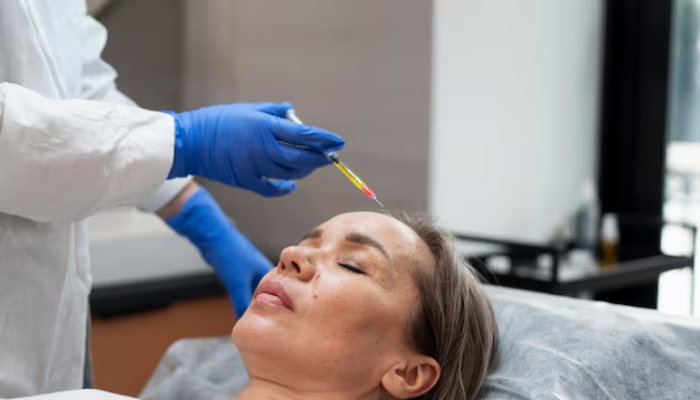Common Treatments and Their Uses:
Topical Treatments: These include creams, gels, and serums containing ingredients like retinoids, alpha hydroxy acids (AHAs), and beta hydroxy acids (BHAs). These substances help by promoting cell turnover, fading discoloration, and encouraging the production of new skin cells. Over-the-counter options, like retinol, can lighten hyperpigmentation scars, while stronger retinoid prescriptions can treat more severe cases. Benefits include ease of use and a non-invasive approach, though they may take months to show results.
Chemical Peels: Chemical peels involve applying an acid solution (like glycolic acid or salicylic acid) to the skin, which removes the top layers of skin, allowing new, smoother skin to replace it. Chemical peels are particularly effective for superficial scars and hyperpigmentation. Benefits include improved skin texture and a more even complexion, though some downtime may be needed depending on the peel’s strength.
Microdermabrasion and Dermabrasion: Microdermabrasion is a less aggressive form of dermabrasion, where the skin is exfoliated using a diamond tip or crystals to remove dead skin cells. It’s primarily used for mild scarring and can also improve skin texture. Dermabrasion, a more intense version, removes deeper layers of skin and is better suited for more severe scars. Both treatments promote collagen production, resulting in a smoother appearance over time.
Microneedling: Microneedling involves tiny needles that create micro-injuries in the skin, stimulating the body’s natural healing process and collagen production. This process helps fill in depressed acne scars and improve overall skin texture. Benefits include minimal downtime, and it’s suitable for most skin types. Microneedling can also be combined with other treatments, like platelet-rich plasma (PRP), to enhance results.
Laser Therapy: Laser treatments are highly effective for different types of scars. Ablative lasers remove the outer layers of skin, while non-ablative lasers stimulate collagen production deep within the skin. Fractional lasers target small areas of damaged skin, which helps reduce scar depth and promote healing. Benefits of laser treatments include dramatic improvements in the appearance of both deep and surface-level scars, with a relatively short recovery period.
Filler Injections: For atrophic scars, dermal fillers like hyaluronic acid can be injected into the depressed areas to temporarily smooth out the skin. While fillers provide immediate results, they typically last only six months to a year, making maintenance injections necessary.





